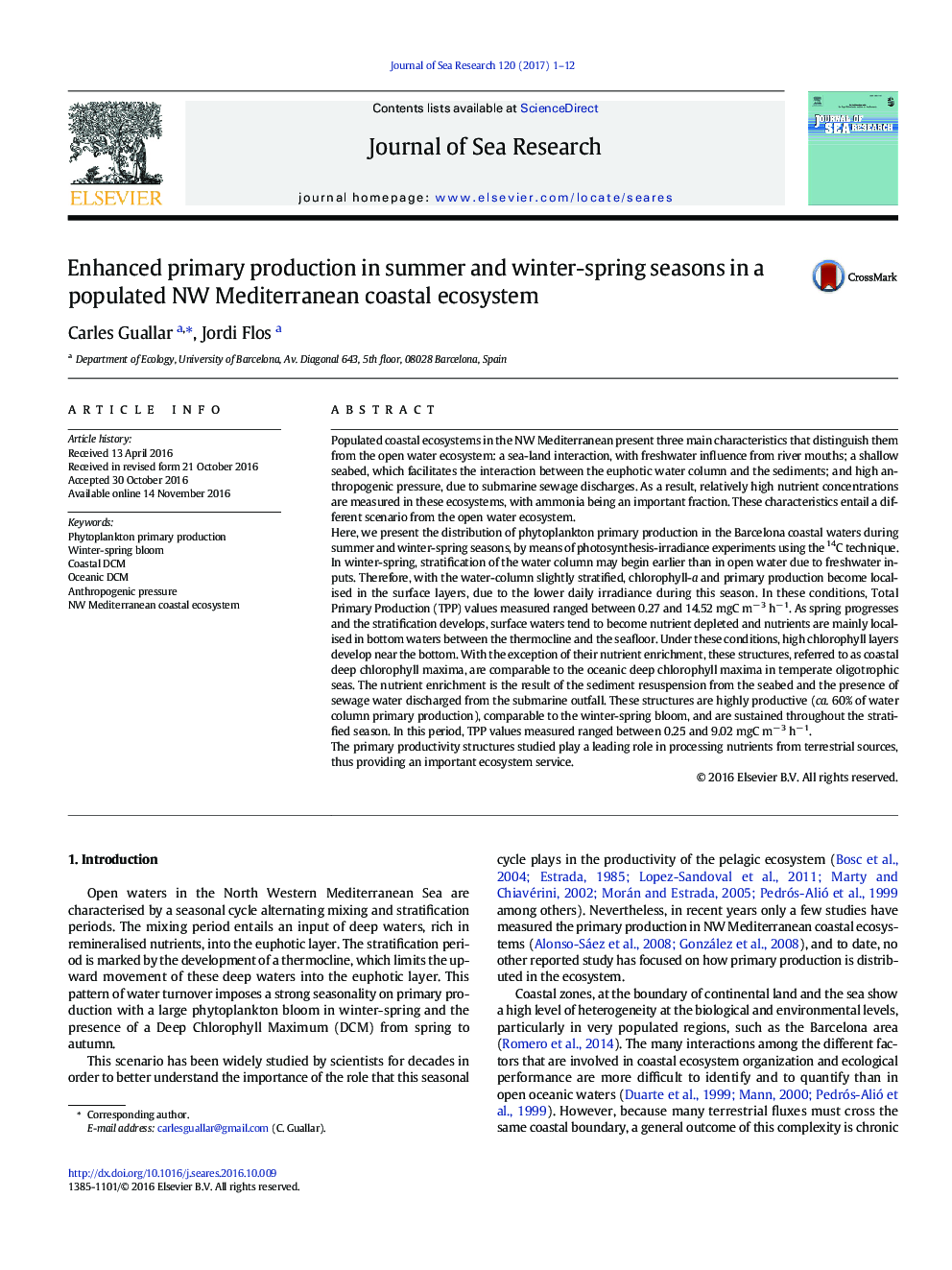| کد مقاله | کد نشریه | سال انتشار | مقاله انگلیسی | نسخه تمام متن |
|---|---|---|---|---|
| 5766076 | 1627455 | 2017 | 12 صفحه PDF | دانلود رایگان |
- Phytoplankton primary production is studied in populated coastal waters.
- Seabed, land-sea interactions and anthropogenic pressure influence productivity.
- Summer production is mainly found in the coastal deep chlorophyll maximum.
- Winter-spring production is limited to surface waters.
- Mean summer and winter-spring productivities are of the same magnitude.
Populated coastal ecosystems in the NW Mediterranean present three main characteristics that distinguish them from the open water ecosystem: a sea-land interaction, with freshwater influence from river mouths; a shallow seabed, which facilitates the interaction between the euphotic water column and the sediments; and high anthropogenic pressure, due to submarine sewage discharges. As a result, relatively high nutrient concentrations are measured in these ecosystems, with ammonia being an important fraction. These characteristics entail a different scenario from the open water ecosystem.Here, we present the distribution of phytoplankton primary production in the Barcelona coastal waters during summer and winter-spring seasons, by means of photosynthesis-irradiance experiments using the 14C technique. In winter-spring, stratification of the water column may begin earlier than in open water due to freshwater inputs. Therefore, with the water-column slightly stratified, chlorophyll-a and primary production become localised in the surface layers, due to the lower daily irradiance during this season. In these conditions, Total Primary Production (TPP) values measured ranged between 0.27 and 14.52 mgC mâ 3 hâ 1. As spring progresses and the stratification develops, surface waters tend to become nutrient depleted and nutrients are mainly localised in bottom waters between the thermocline and the seafloor. Under these conditions, high chlorophyll layers develop near the bottom. With the exception of their nutrient enrichment, these structures, referred to as coastal deep chlorophyll maxima, are comparable to the oceanic deep chlorophyll maxima in temperate oligotrophic seas. The nutrient enrichment is the result of the sediment resuspension from the seabed and the presence of sewage water discharged from the submarine outfall. These structures are highly productive (ca. 60% of water column primary production), comparable to the winter-spring bloom, and are sustained throughout the stratified season. In this period, TPP values measured ranged between 0.25 and 9.02 mgC mâ 3 hâ 1.The primary productivity structures studied play a leading role in processing nutrients from terrestrial sources, thus providing an important ecosystem service.
Journal: Journal of Sea Research - Volume 120, February 2017, Pages 1-12
